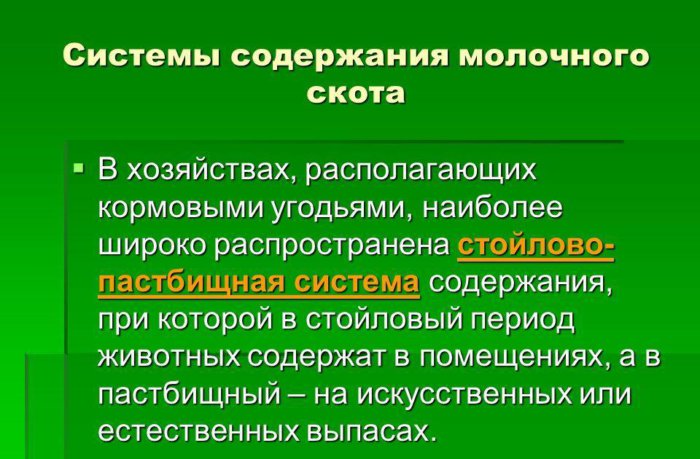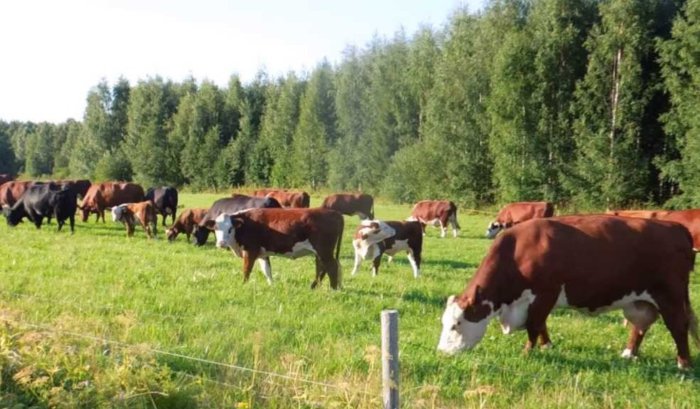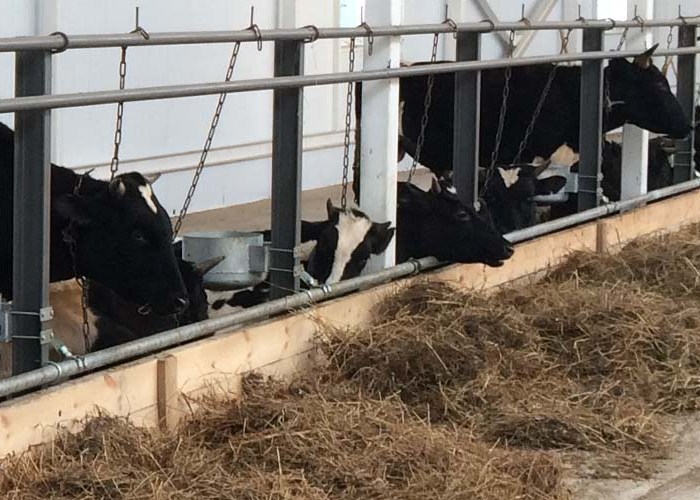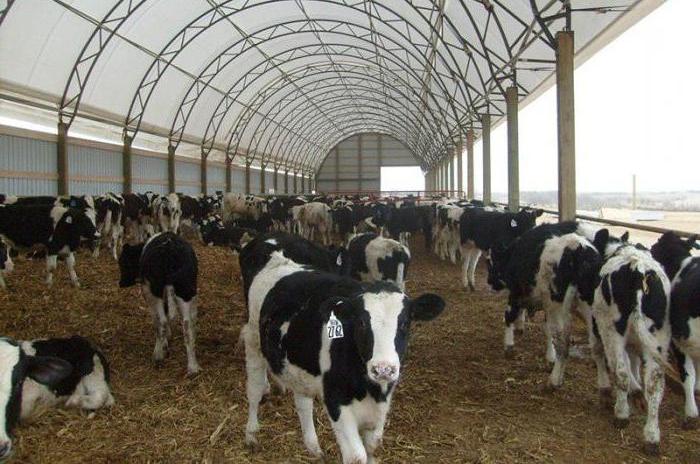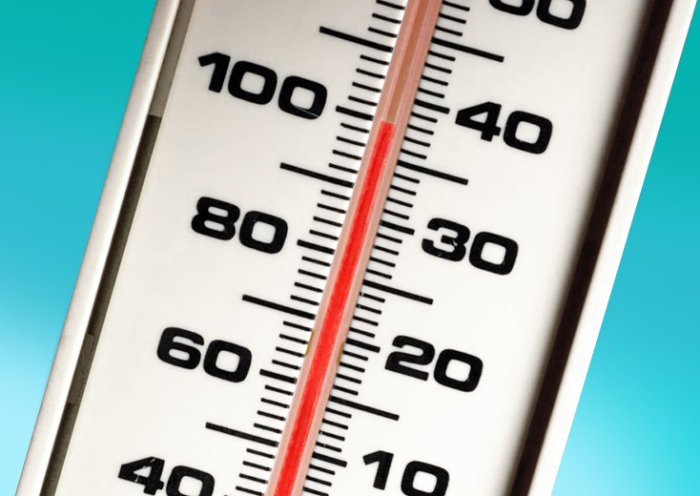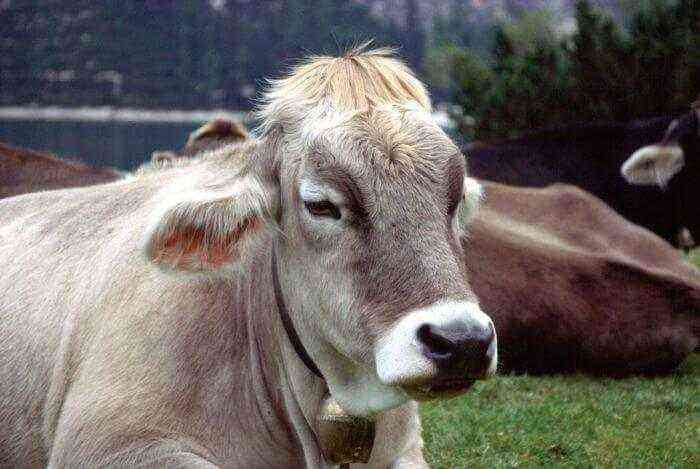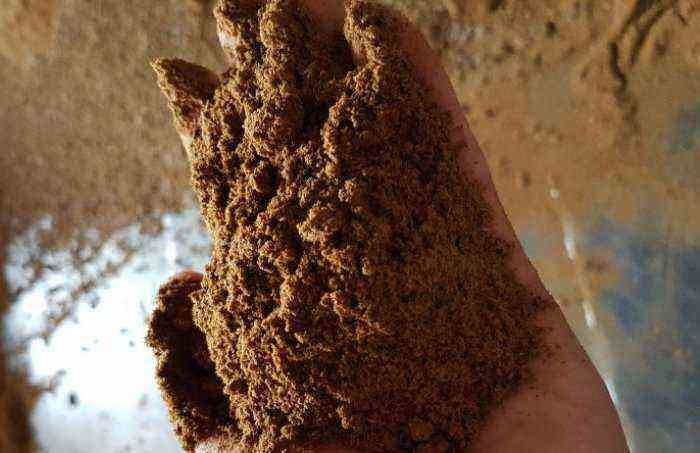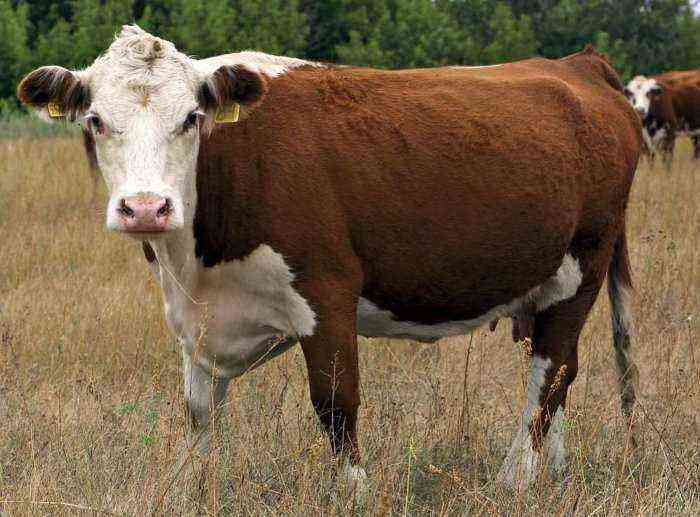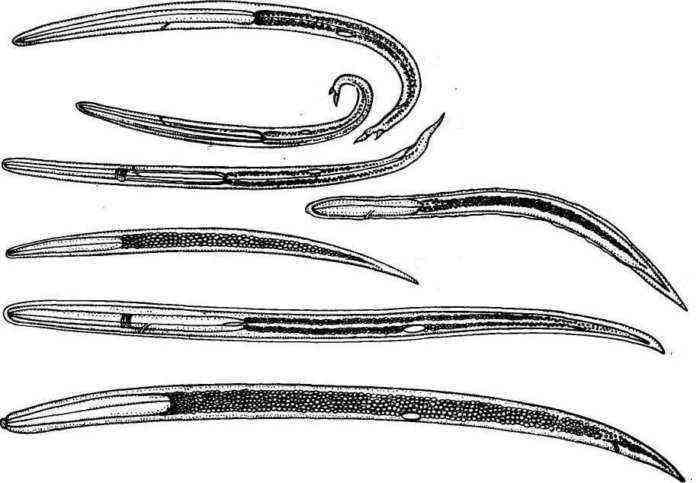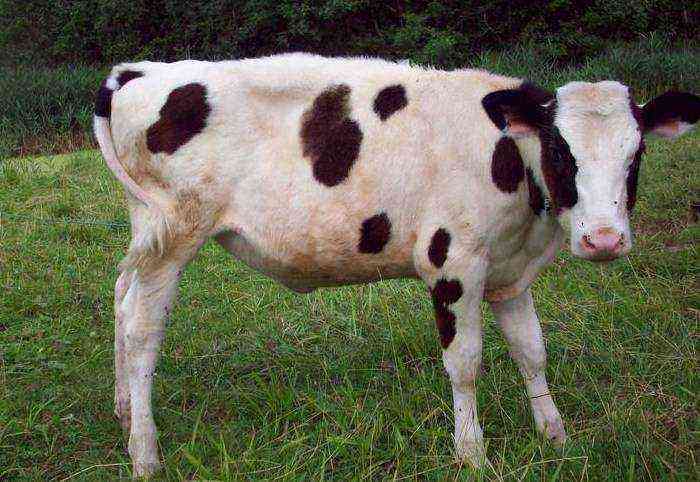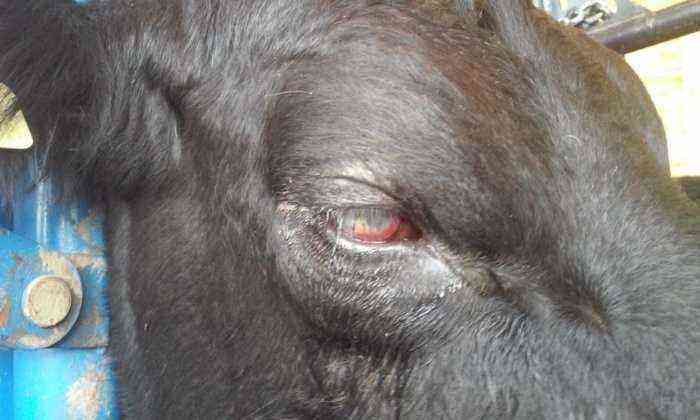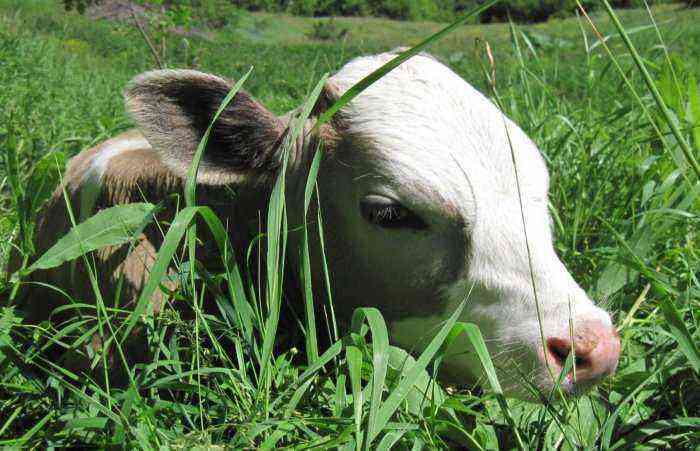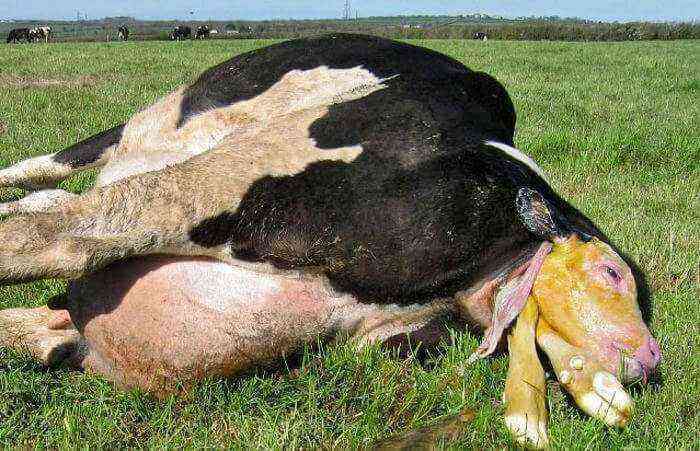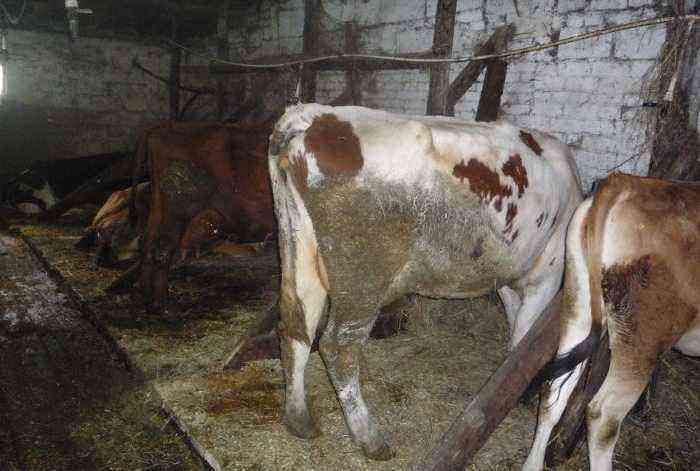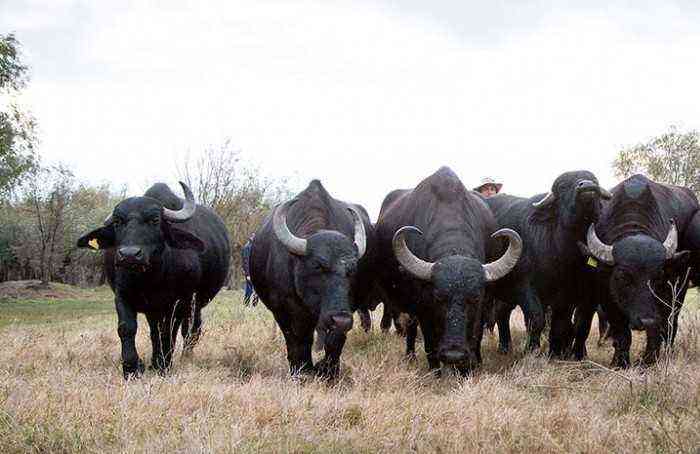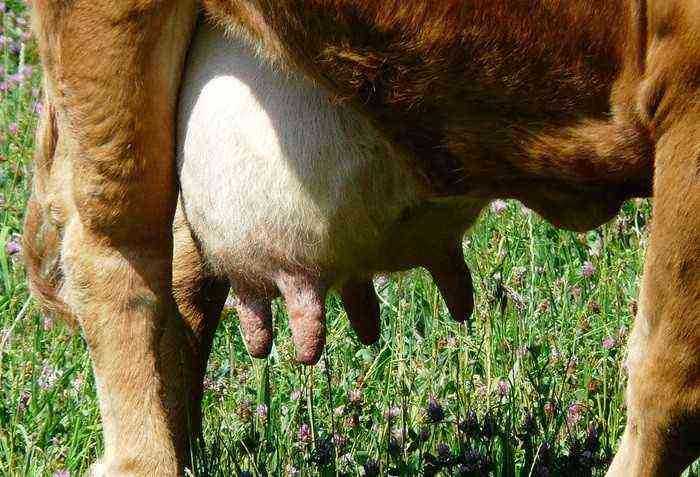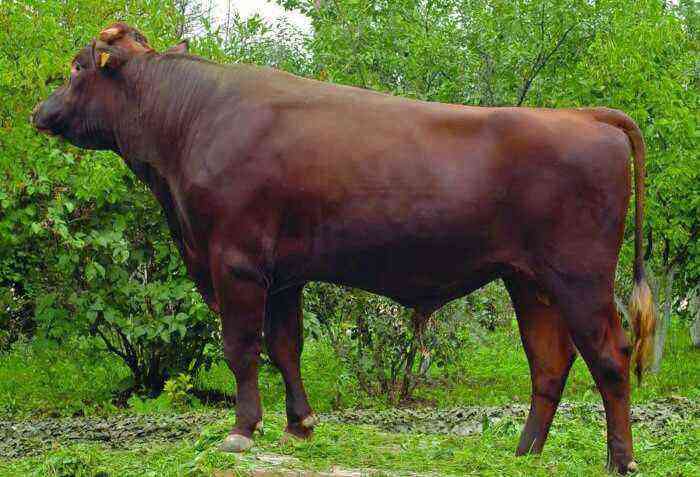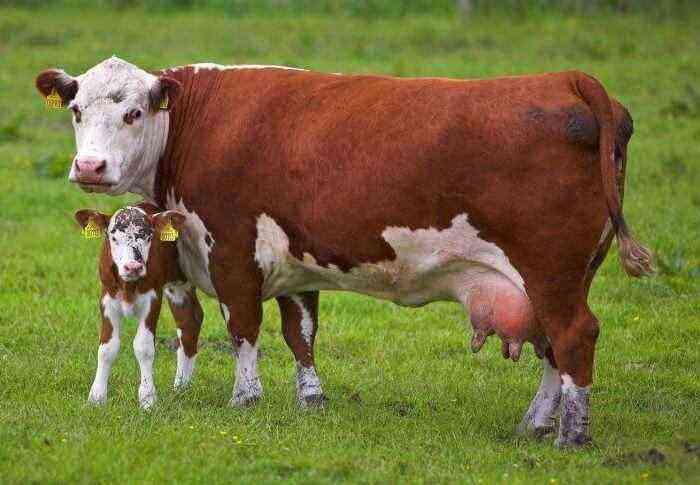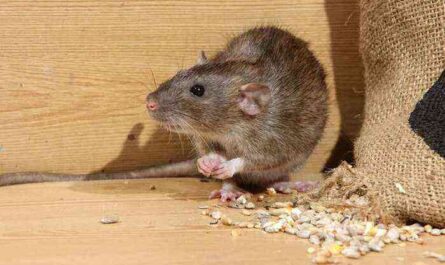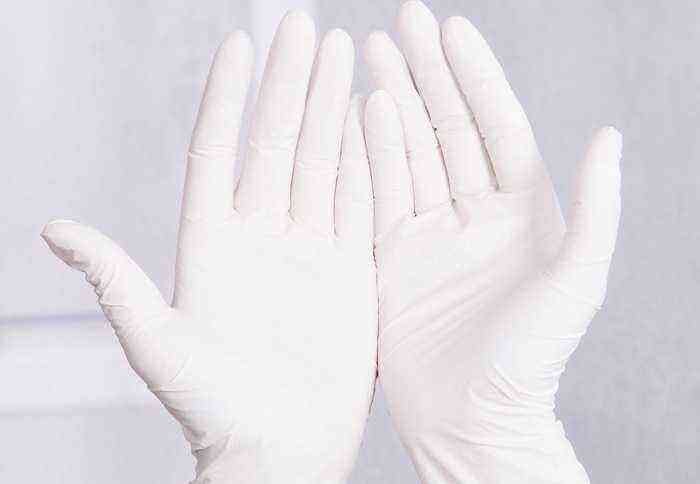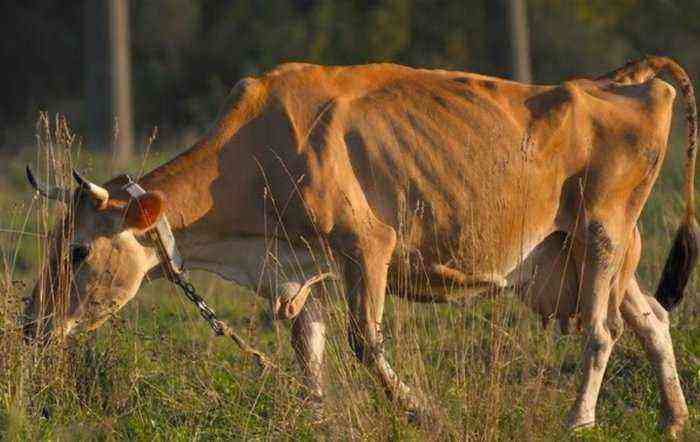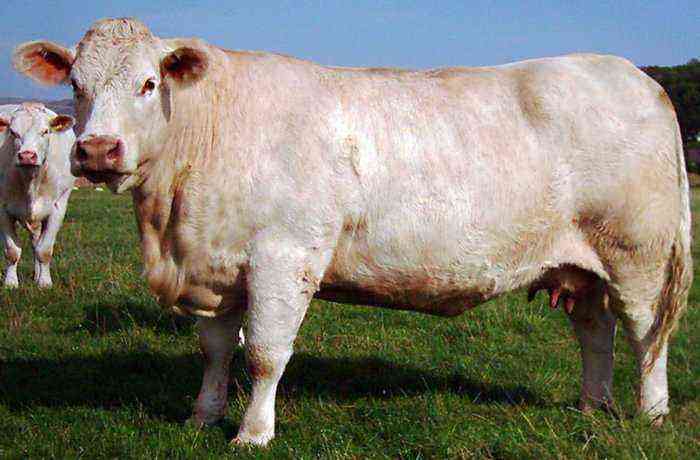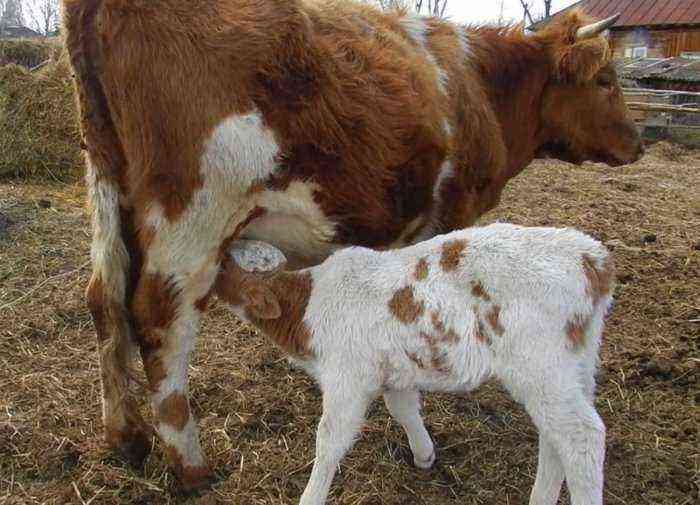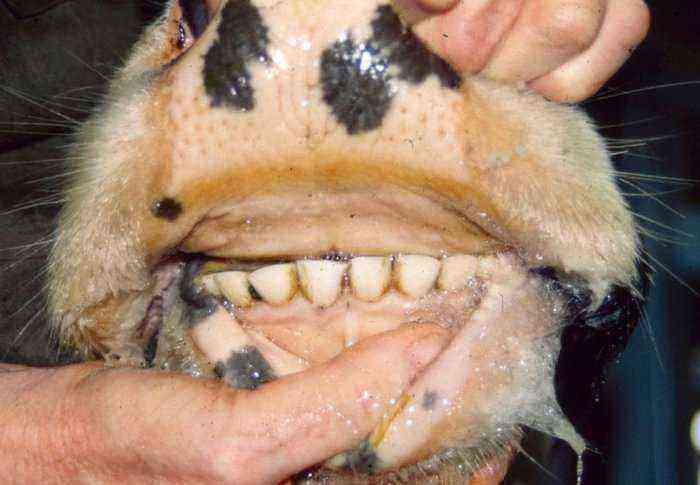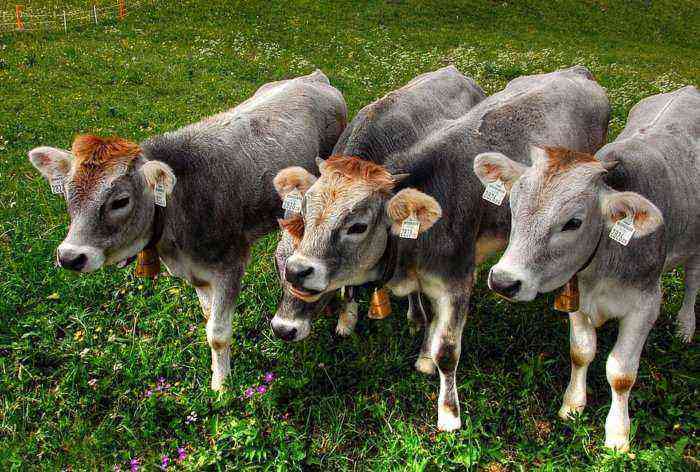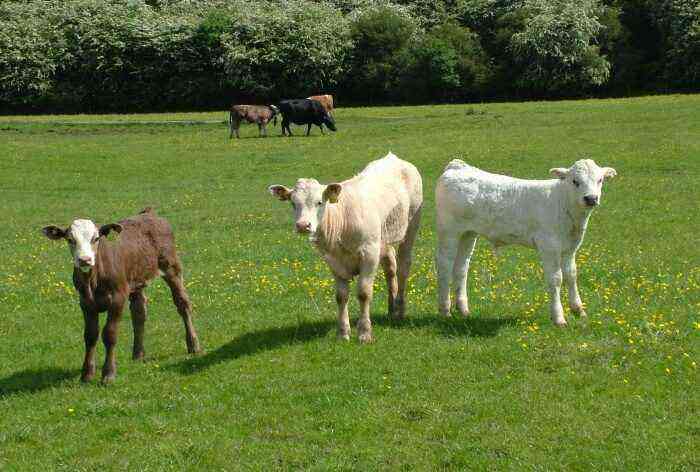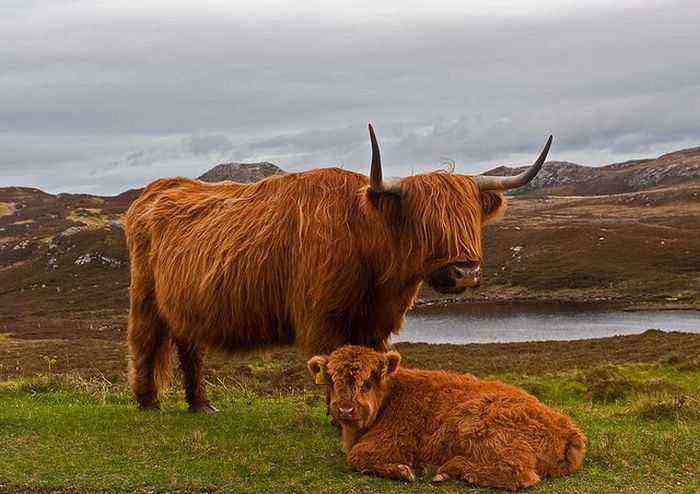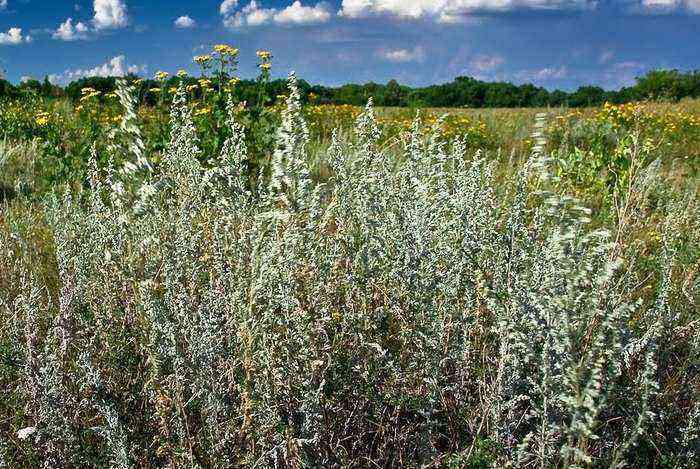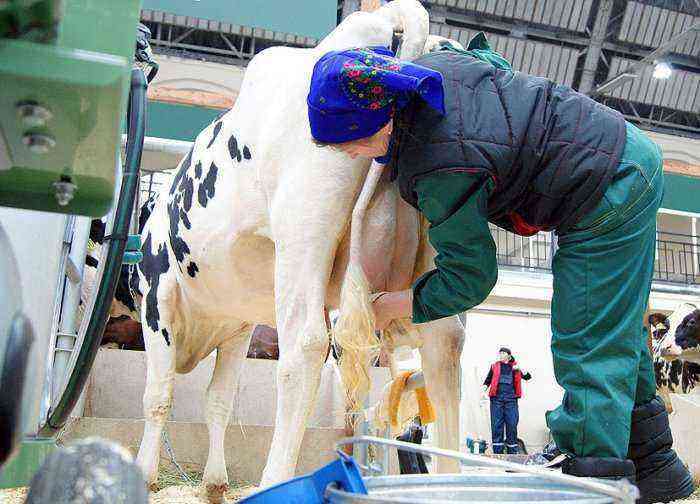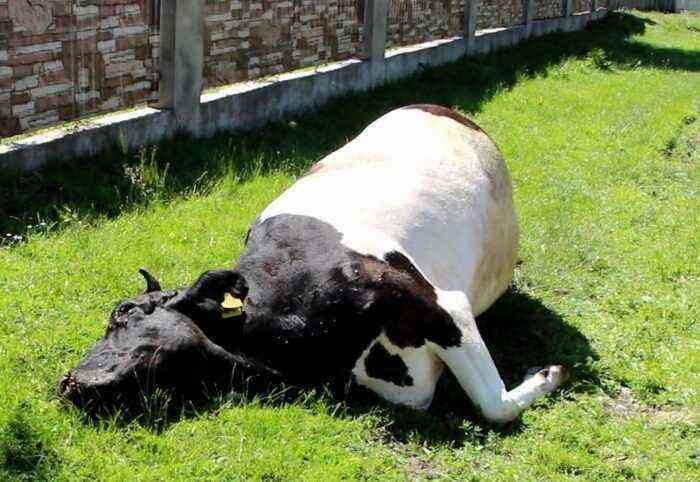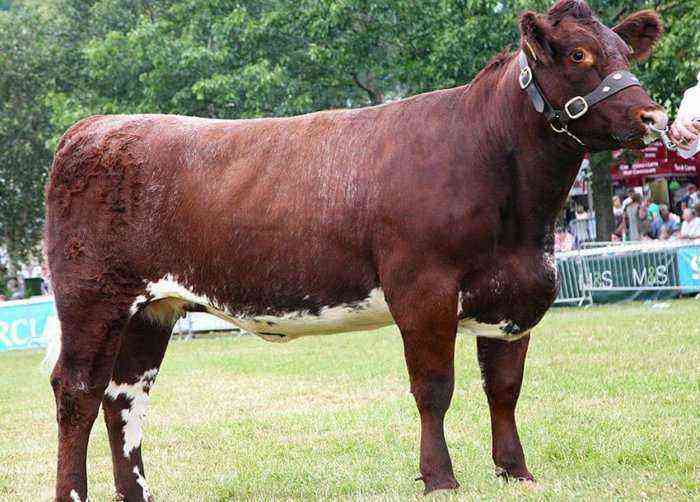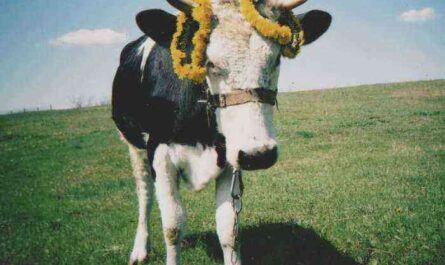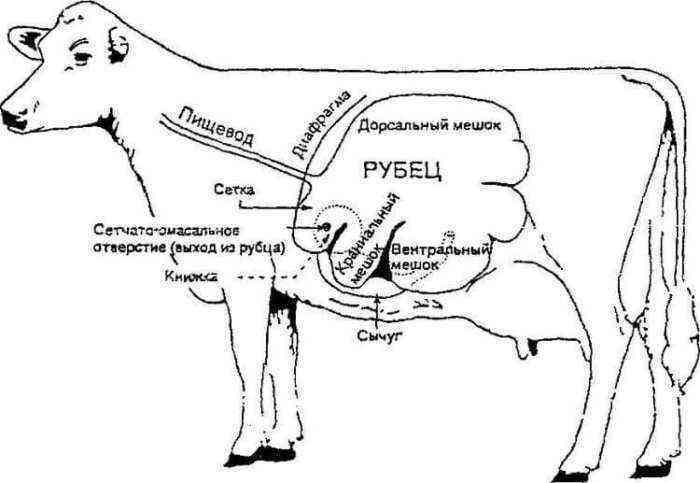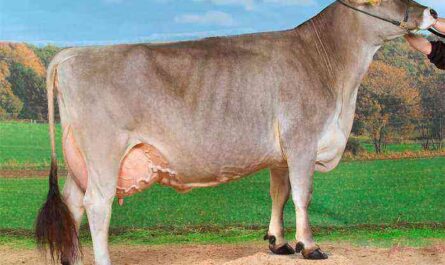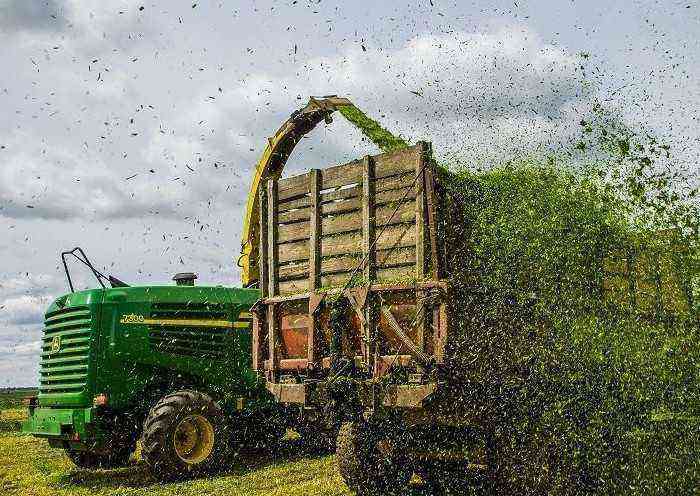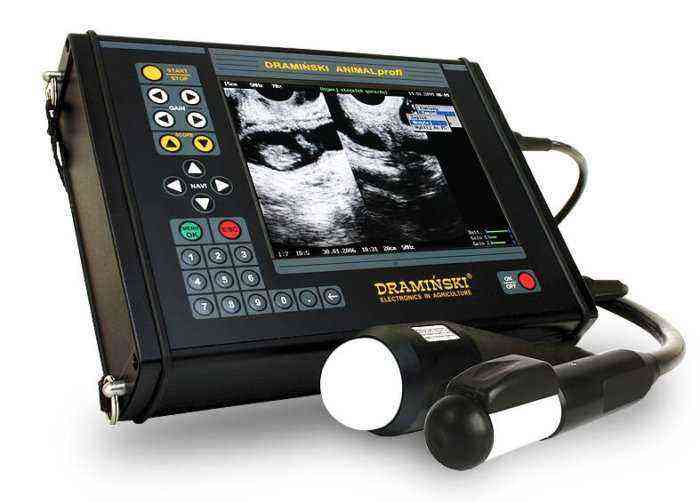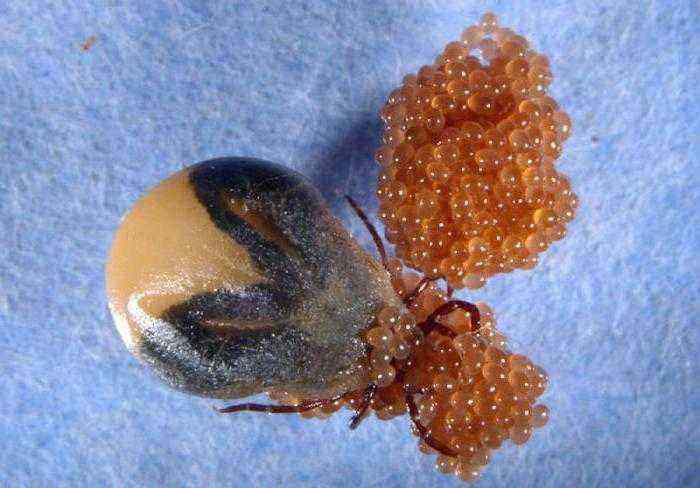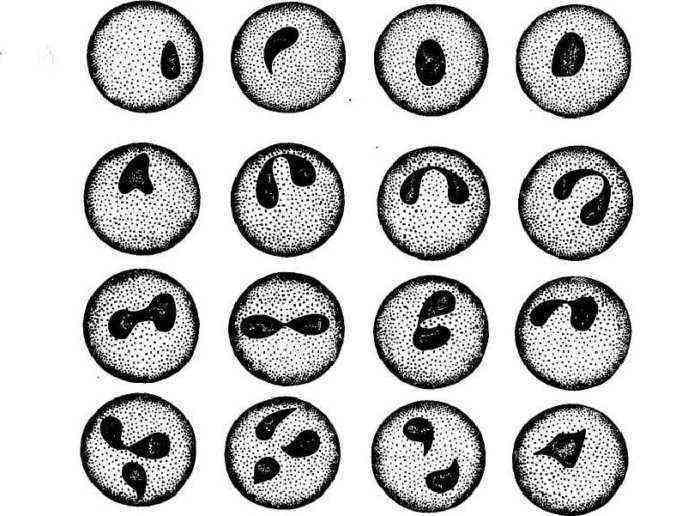The content of cattle should be carried out in accordance with the approved rules. Not only the well-being of animals, but also the level of productivity depends on the correctness of actions. The main prerequisite for successful intensification is the consideration of biological needs. Most modern farms and agricultural land go against technical standards, which negatively affects the general condition of animals and their offspring. All actions must be carried out according to physiology using rational decisions.
Cattle maintenance
Content systems
Modern farming accepts two main systems for keeping cattle: stall and pasture. Each technique is based on its own nuances and requirements for compliance with certain technical rules.
Stoilovaya
The use of a stall system is appropriate for large suburban enterprises. Animals live on plowed land. This system is applied in the event that there is a high concentration of livestock in the care of the farm. The organization of optimal living conditions begins with the provision of animals with expanded areas for walking.
Technological operations, in particular feeding and milking, are carried out in a limited area. Cows receive concentrated feed and impurities for food. Animals do not leave their habitat, which limits their ability to consume fresh grass. This is only possible during the summer.
The disadvantage of stall keeping is the low indicator of health and productivity of cattle. This is due to the lack of physical activity and other restrictions. The stall method is conditionally divided into:
- Stable-pasture.
- Stall-camp.
stall-pasture system
The stall-pasture system is used exclusively on a farm provided with fodder land. A high level of productivity is achieved due to portioned grass cutting using electric shepherds. Animal grazing begins in the spring, when the height of the greenery is about 15 cm. With good grass quality, one cattle eats about 75 kg of green mass. This has a positive effect on overall well-being and guarantees a moderate weight gain. The amount of milk produced depends on the quality of feeding. Given the consumption of 75 kg of greens, one cow gives 18 liters of produce daily.
The stall-camp system is appropriate if the agricultural land does not have enough greenery. Animals are kept in special rooms, far from pastures. Feeding is carried out with concentrated feed and additives. The advantage of this method of maintenance is the rational use of all the benefits of seasonal and weather conditions.
pasture
The pasture system has many advantages. Its use is considered cost-effective. Farmers do not spend money on feed, providing animals with greenery in pasture conditions. The constant exposure of cows to fresh air has a positive effect on their overall well-being, promotes health and productivity. Animals are always active, puberty is correct, the organs and systems of the body are strong.
Benefiting from this maintenance system is possible only if the agricultural land is equipped with an area with dense greenery. On bare pastures, the animal does not receive enough nutrients, which reduces productivity and negatively affects health indicators.
When choosing a territory for keeping cows, it is necessary to take into account not only the density of greenery, but also the presence of water bodies. Animals must receive sufficient food and fluids. It is advisable to choose an area with trees, or in case of their absence, install sheds. The shadow must be present without fail, this will protect the cattle from overheating.
Maintenance in a grazing system
Content in the conditions of the pasture system has its own nuances:
- grazing is prohibited during frosts;
- the animal is not displayed in open areas after rain;
- grazing is possible after the grass is completely dry;
- in the summer, walking is carried out exclusively in places close to the watering place;
- when grazing, it is necessary to take into account the movement of livestock, animals should not huddle together;
- special care is required when forming a herd;
- animal grazing areas are supplied with salt licks.
To provide livestock with the necessary amount of liquid, the use of natural groundwater or atmospheric water is suitable. Without fail, the daily diet of livestock is supplemented with mineral supplements. It is necessary to water the animal 3-4 times a day, in the summer – at least 5 times.
Reference. The animal spends the night in a specially equipped room with a developed infrastructure. Livestock should have enough space to rest. Additionally, the room is equipped with a source of water supply.
Content methods
Methods of keeping cattle include two main options: tethered and loose. Each method is appropriate in certain cases, has its own characteristics and nuances.
Tethered
The most common and widely used method of keeping cattle is tethered. Animals live in stalls, where optimal conditions for their existence are created. Each room is equipped with mechanical devices that fix the livestock by means of ties. This allows you to control the activities of the animals and fully automate the process of care and milking.
Tethered way of keeping cows
Feeding is carried out in stalls with specially equipped feeders. Combined and concentrated feeds are widely used. The amount of food is calculated depending on the weight category of the cattle and its milk production. Water is supplied to each stall without fail. The animal rests in the same place; for its comfortable stay, a special flooring is used. Milking is carried out using automated portable machines. Their use significantly speeds up and simplifies the process of obtaining dairy products. Automated portable units are used when stocking density is high.
Animals are constantly on the bring, live singly or in groups. Much depends on their size and gender. The tethered method of keeping allows for the highest productivity rates, which makes it popular among farm and agricultural land.
untethered
The loose way expands the possibilities of the cow. The animal is able to independently move around the allotted area, eating fresh grass. In winter, feeding is carried out with the use of concentrated feed and impurities. Cattle rest on deep bedding or in boxes.
In modern farming, the loose method is widely used, which is based on being in the box. Developed countries have been using this technique for several decades. It provides the animal with all the necessary conditions for living, increasing the productivity and quality of dairy products.
Milking of cows is carried out in special milking devices. On developed farms, manual labor is not used. All processes are fully automated. This allows you to reduce time and financial costs. One milking machine is able to serve two or three herds at the same time.
Boxed loose content is based on a specific schedule. Animals are sent to be fed or milked by time. This action allows you to develop a specific schedule, increase productivity and reduce manual labor costs.
Boxed loose content
The main advantage of loose housing is the creation of optimal conditions for animals. Cattle perform all activities (feeding, resting, milking) according to a specific schedule. An optimized modern keeping process has a positive effect on the general well-being of animals and the quality of the resulting dairy products.
Rules for keeping cattle
The approved veterinary rules for keeping cattle make it possible to create optimal conditions for the normal existence of animals. They are based on the requirements for the arrangement of the territory, the sewerage system, the microclimate, health monitoring, feeding, watering and milking.
According to the approved rules, the place of residence of cattle should be surrounded by a solid fence. A sanitary checkpoint and a disinfection barrier are installed on each territory. Entry and exit of transport is carried out through specially designated gates. It is mandatory to organize a checkpoint that prevents unauthorized persons from entering the territory of the barn.
Farm or agricultural land is equipped with a sewerage system. It allows you to eliminate not only animal waste, but also to eliminate atmospheric precipitation. The premises in which animals live are equipped with toilets. According to experts, it is advisable to provide a method for disinfecting manure.
To increase the level of performance of animals, it is necessary to create a certain microclimate in the stalls. The premises are equipped with sufficient lighting and ventilation system. The room must be dry and clean. The formation of condensate is completely excluded. The optimum air temperature should not exceed 10-12 degrees with a humidity of 75-80%. The temperature indicator must be observed and not allowed to fluctuate. At low temperatures, animals experience stress, which negatively affects their general well-being.
Temperature conditions are extremely important
Animals are under special control. Cultivation of young animals is carried out according to special rules. Thus, animals must be provided with concentrated feed and plenty of drink according to the developed algorithm. This takes into account age requirements and physiological characteristics. Feeding is carried out using safe feed, which is fully consistent with the quality and provides the animal with the necessary amount of useful components. The change of feed is carried out gradually, within 5-10 days.
Important! Water used for drinking must fully comply with sanitary standards and rules. Its temperature index is 8-12 degrees.
Conclusion
The choice of method of keeping cattle depends on the possibilities of farming and agricultural land. The main thing is to follow the basic rules and norms and not deviate from the approved requirements. Regardless of the method of keeping, animals must live in well-established conditions. This action will create a comfortable stay, which guarantees high performance and positively affects the quality of dairy products.
